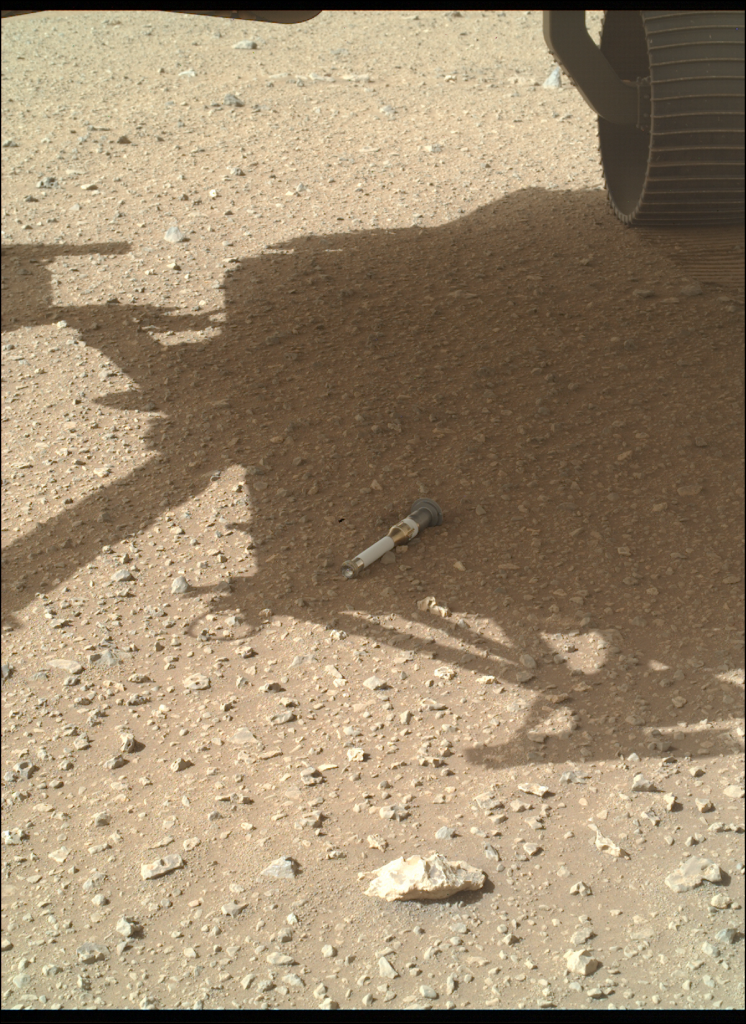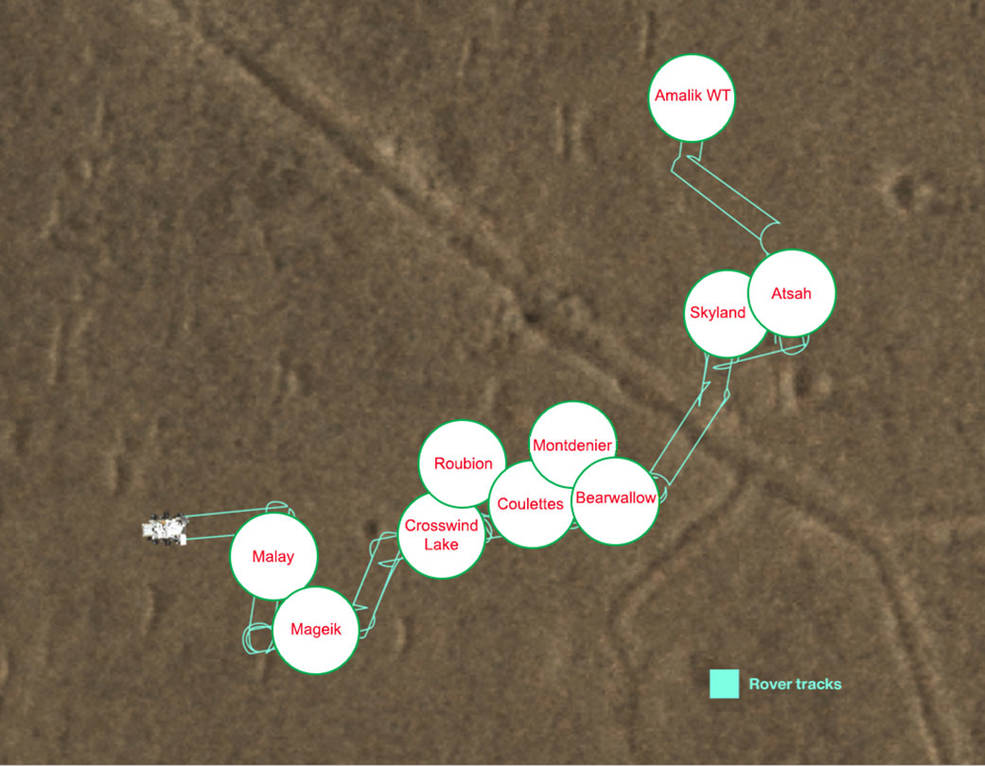NASA’s Perseverance rover took this selfie looking down at one of 10 sample tubes deployed during the creation of the first sample depot on another world. The camera on the rover’s robotic arm took 59 individual images to build this vermillion view.
It was on the 690th martian day of its mission, or sol, when the rover dropped the tenth and final tube on the Red Planet in an area nicknamed “Three Forks.” The titanium tubes were deposited carefully in a zigzag pattern, with each sample up to 15 meters apart.

This set of samples, known as the “sample depot,” will serve as an insurance policy. The rover has been busy collecting two samples of each rock in the Jezero crater – one sample of each rock is held within its belly, and the second one of each rock is now on the surface. There are reasons behind this redundancy in the Mars Sample Return Campaign.
The samples are stored twice because there are two options for the decade-spanning Mars Sample Return campaign. Plan A will see the rover delivering the main set of samples directly to a lander with the help of ESA’s Sample Transfer Arm. In case Perseverance is not able to hand the samples over at the end of this decade, there is a Plan B – two small drone helicopters will fetch the tubes set aside on the ground and take them to the lander. The 2.5 metre-long European robot will give a hand to collect them from the ground and transfer them into the container bound for a trip to Earth.
Mission scientists believe that the rock cores part of this depot will give us an overview of the geologicalprocesses that took place in the Jezero crater almost four billion years ago. The rover also deposited an atmospheric sample and a “witness” tube, which is used to determine if samples being collected might be contaminated with materials that traveled with the rover from Earth.

For those who worry about the samples being left on their own for nearly a decade, be assured that teams on Earth are recording the precise location of each tube for when the time comes to collect them. And even if martian winds can reach high speeds, they are not as strong as on Earth. The atmosphere on Mars is less dense: about 100 times less than on our planet. Any dust collecting on the tubes will not cover them fully when collection time comes.
To understand the complexity of the tasks ahead, watch this trailer that describes the Mars Sample Return Campaign in just two minutes.

Discussion: no comments